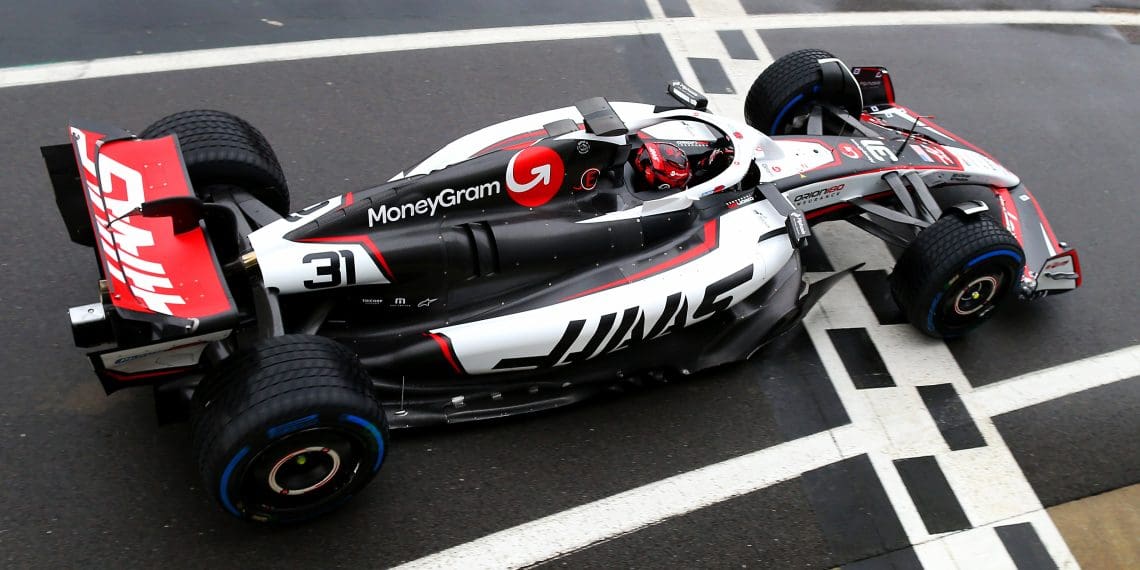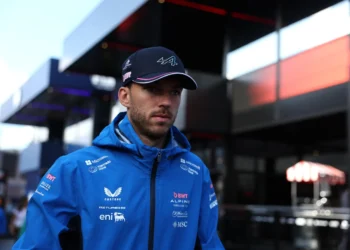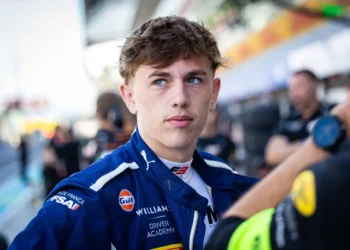Haas, the American Formula 1 team, has made significant strides in its ability to enhance the performance of its race car throughout a season, as evidenced by the comparison of two distinct upgrade packages implemented a year apart at the United States Grand Prix in 2023 and 2024. Ayao Komatsu, the team principal, commends the progress, stating the team has made a “180 degrees” turn in terms of improving its machinery.
The 2024 season saw Haas introduce a major aerodynamic upgrade package at the Austin Grand Prix, marking the 19th of their 24 races. This strategic move fortified the team’s position, making them the fifth-fastest team at the tail end of the season. Despite this impressive leap, Haas narrowly missed securing the sixth position in the constructors’ championship due to Alpine’s remarkable double podium finish at Interlagos.
This successful upgrade is a stark contrast to their 2023 performance when Haas also launched a significant upgrade at Austin. The earlier package, which was deeply influenced by the dominant Red Bull RB19 design, unfortunately did not deliver the expected boost in performance, leaving Haas languishing at the bottom of the constructors’ championship.
Komatsu attributes the 2024 improvement to a change in communication within the team. He emphasizes the importance of aligning everyone on the same page and engaging in an open dialogue to foster improvement. The team shifted from a top-down communication approach to a more collaborative one, where opinions of the technical experts were given precedence.
This marked a departure from Haas’s previous reputation of struggling to make significant gains during a campaign. The team’s technical director Andrea de Zordo and head of aero Davide Paganelli were instrumental in driving this change. Their expertise and leadership have helped dispel the perception that Haas is incapable of upgrading a car during a season.
The 2023 Austin upgrade was a particularly low point for the team, marking a drastic change in direction. The team grappled with a car that performed well in qualifying rounds but experienced rapid tire degradation during races. This issue was eventually linked to an inconsistent aerodynamic load caused by the loss of downforce when in yaw.
Despite owner Gene Haas’s eagerness to emulate Red Bull’s direction, the team struggled with stagnation in wind tunnel gains, prompting an alternate development direction. However, the Austin upgrade of 2023, a product of this new direction, fell short of the team’s expectations, revealing the importance of internal communication and the danger of hasty decisions.
The 2024 Austin upgrade, on the other hand, was a product of months of open discussions and careful planning. It was a logical progression from their previously successful aerodynamic package introduced at Silverstone mid-season, and it delivered as expected, highlighting the stark contrast between the two years.
The team’s improved working methodology is not the only positive change. Haas has entered a new technical partnership with Ferrari, enabling them to launch a TPC (testing of previous cars) programme for the first time. This program, focusing on cars from 2021 to 2023, debuted last month, boosting the team’s long-term potential.
Communication remains a pivotal factor in the team’s success, especially considering the geographical challenges with the design hub located in Maranello, Italy, and the rest of the race team operating out of the United Kingdom. Effective communication will be crucial to Haas’s aspiration to maintain or even improve their position in 2025, given the inevitable advancements from rivals like Alpine, Williams, Racing Bulls, and Sauber.













